On a hike in John Dean Provincial Park, here on Vancouver Island the other day I passed a lot of other hikers. It was a Sunday and although it was early January the weather was quite pleasant so there were lots of folks on the trails. As I was slogging up a steeper section of the trail and passing by a few other hikers, I got to thinking about trail etiquette and who has the right of way.
For the most part, here on the ‘Island’, people are very courteous with friendly hellos constantly being exchanged. However, I began to notice that by and large I was always the one stepping aside and letting the other pass, even on the up hill sections. It seemed that no one else was really making any effort to give way.
So, Who does have the Right of Way?
This led me back to reminiscing of my first backpacking trips as a teenager in the mountains of New Mexico where I did a couple of 10 day hiking excursions in Philmont Scout Ranch with my Boy Scout Troop from Colorado Springs. My father was a Major in the Canadian Armed Forces at the time and was posted there with NORAD (North American Air Defense Command). This is where I learned the first basics of trail etiquette, which included not only who has the right of way, but the importance of staying on the trails to decrease the effects of erosion and trampling vegetation as well as the concept of leaving no trace.
One of the first rules we learned was, ‘the person going uphill has the right of way.’ This was for a couple of reasons. Uphill hikers are working hard against gravity to have a good pace and momentum to get them up that hill particularly when carrying a heavy pack, so it’s courteous to step aside and allow them to keep that momentum going. This was particularly important at Philmont where all the hiking was above 6,000 feet and troops who arrived there from lower elevations were really struggling with the altitude! However, it is also understood that hikers trekking uphill have a narrower field of view since they are generally focused on the smaller and more immediate area directly in front of them.
Of course there are always exceptions to the rules. Someone struggling uphill may be more than happy to use this as an excuse to be able to stop and take a breather. We certainly saw a lot of that at Philmont! Also, it makes a lot more sense in many cases for a solo hiker or a couple to step aside and let a larger group go by, not only as a courtesy but it also limits the trampling of vegetation and erosion on the sides of the trails.
If you’re overtaking someone climbing uphill, a simple “hello” is often the best way to announce your presence. Hikers, in ‘the zone’, may not notice your presence behind them, so this will alert them in a friendly way. It is best to try and pass where there is room to stay on the trail once again, to reduce erosion and trampling of vegetation.
Hikers, Bikers & Horses
There are some pretty standard rules for right of way regarding hikers, bikers and horses, and you will see signs to this effect in parks with multi use trails. Bikers are expected to yield to hikers and horses. Hikers should yield to horses.
Sometimes, common sense makes more sense. Since mountain bikes are often moving considerably faster, it is usually easier for hikers to yield the right of way. This can be especially true if a biker is struggling up a steep incline. That being said, a biker should never expect a hiker to yield!
Also, since bikers are moving so much faster, they really need to be aware of their surroundings when riding on shared trails. It is a good idea to call out when coming around blind corners and let hikers know if there are other riders following them. In particular, bikers should go very slowly when passing horses and let riders know they are approaching from behind.
Horses are very large, slow to maneuver and they can be the least predictable creatures on the trail. As previously mentioned, they get the right-of-way from both hikers and bikers and it is best to give them as wide as berth as possible. Whether biking or hiking don’t make abrupt movements and speak calmly to avoid startling the horse.
If you have to get off the trail for a horse it is recommended you do so on the downhill side as they pass by. If horses are spooked they are more likely to run uphill than downhill and you definitely don’t want to be in their way if this happens!
Large Groups
Trail etiquette is even more important when you’re hiking in a group. On narrow trails always hike single-file and stay on the trail. If you’re trying to walk side-by-side, over time those steps off the trail can badly damage the vegetation on the sides of the path and increase the danger of erosion. As mentioned earlier, when a group meets a single hiker or smaller group, it’s generally preferable for the single hiker or smaller group to yield and step safely to the side.
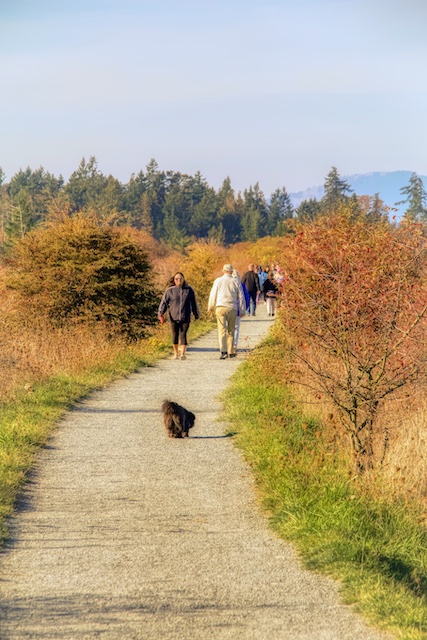
Members of large groups should be prepared to step to the right to allow others to pass on wide trails
On wider trails people will often walk side by side. This is fine up until you meet folks coming the other way in which case someone in your group needs to give way to let others pass. I have found some groups are either too engrossed in their conversations and aren’t paying attention or some may feel they have some sense of privilege and force others to step off the trail. When traveling on trails like this it makes sense to move to the right side of the trail and pass as you would driving on roads.
Dogs
Please remember, your fur friend isn’t exempt from the rules of the trail! Always hike on dog-friendly trails and keep your dog on a leash if there are signs that only permit leashed dogs.
If dogs are allowed off-leash, always keep your dog under control and within a line of sight. When another hiker approaches, with or without a dog, make sure your dog is under control either by leash or command and step to the side. Be polite and let them know if your dog is friendly or not.
By the same token, I don’t have a dog but I am a diehard dog lover, so I like to let folks with dogs know that I don’t mind dogs and they don’t have to worry about trying to grab hold of them or get them on leash as they pass me.
Remember to always clean up after your dogs and PLEASE don’t leave your poop bags lying around for others to pick up (even if you intend to pick it up on the way out). This is truly the definition of poor trail etiquette!
Also, be sure to keep them on the trail and do not let them chase the wildlife or trample the vegetation. So much damage is done to the fragile mosses and plants by dogs charging around uncontrolled.
Final Thoughts
When in doubt of the rules of trail etiquette just treat other hikers, bikers and equestrians the same way you’d treat the trail itself and the way you would like to be treated yourself…with respect. Then get back to enjoying that solitude on the trail!

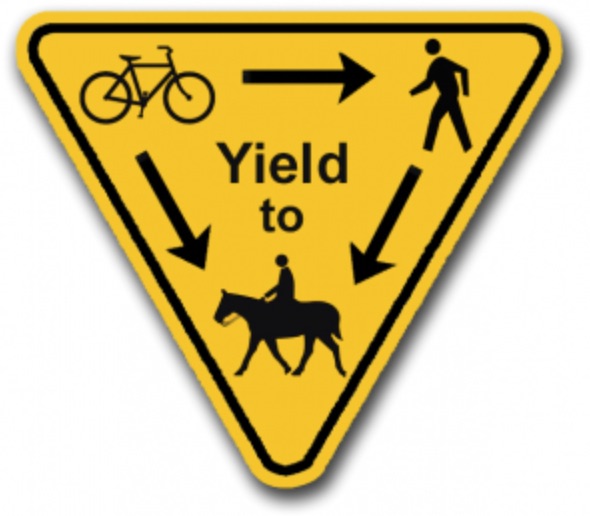
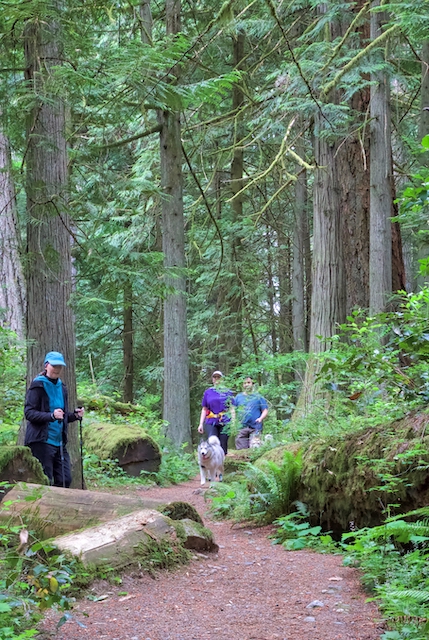

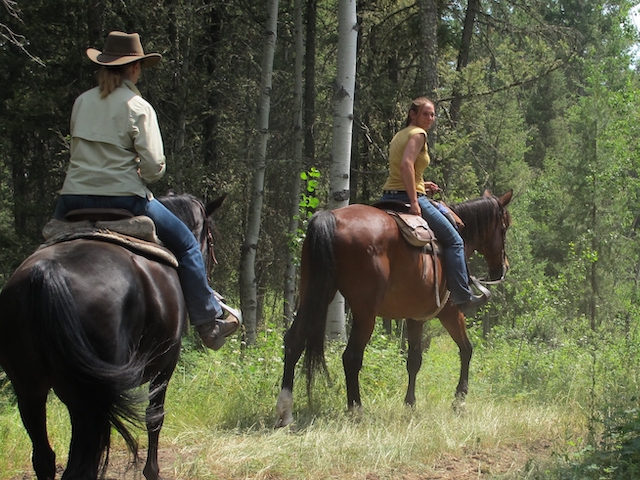
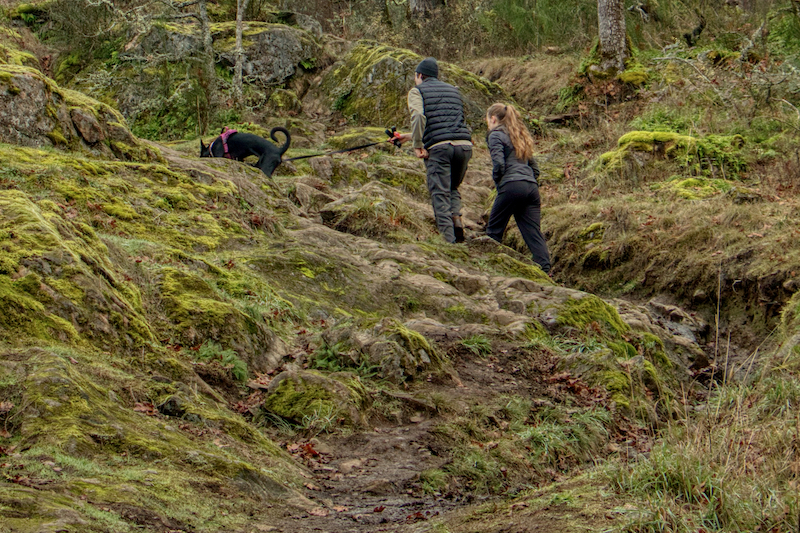

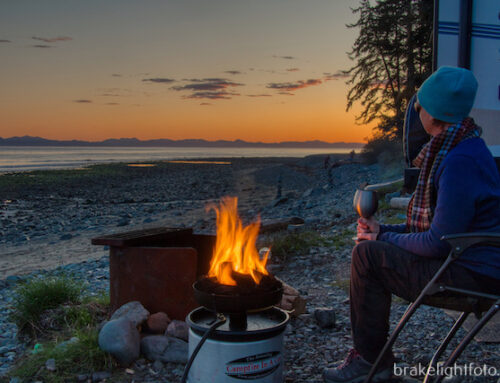
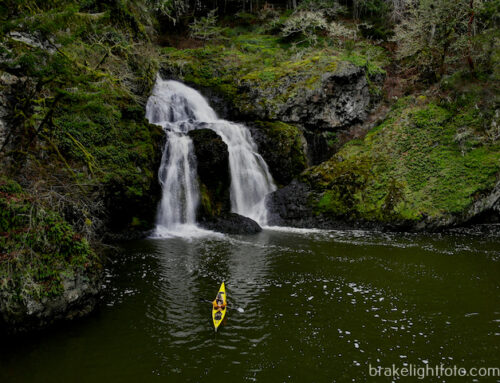
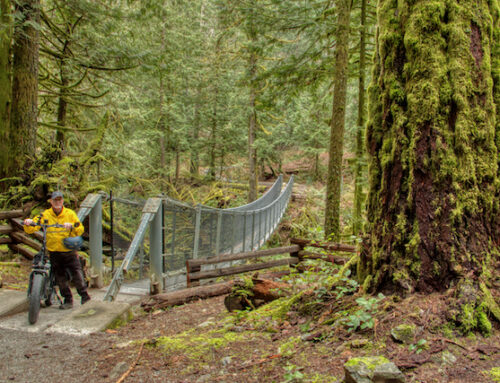
Yes 2 bikers made me climb up a hill and I could barely make it the trail was narrow I told one of the bikers I have! right of way she said no that’s not true and started swearing at me.rude bikers!